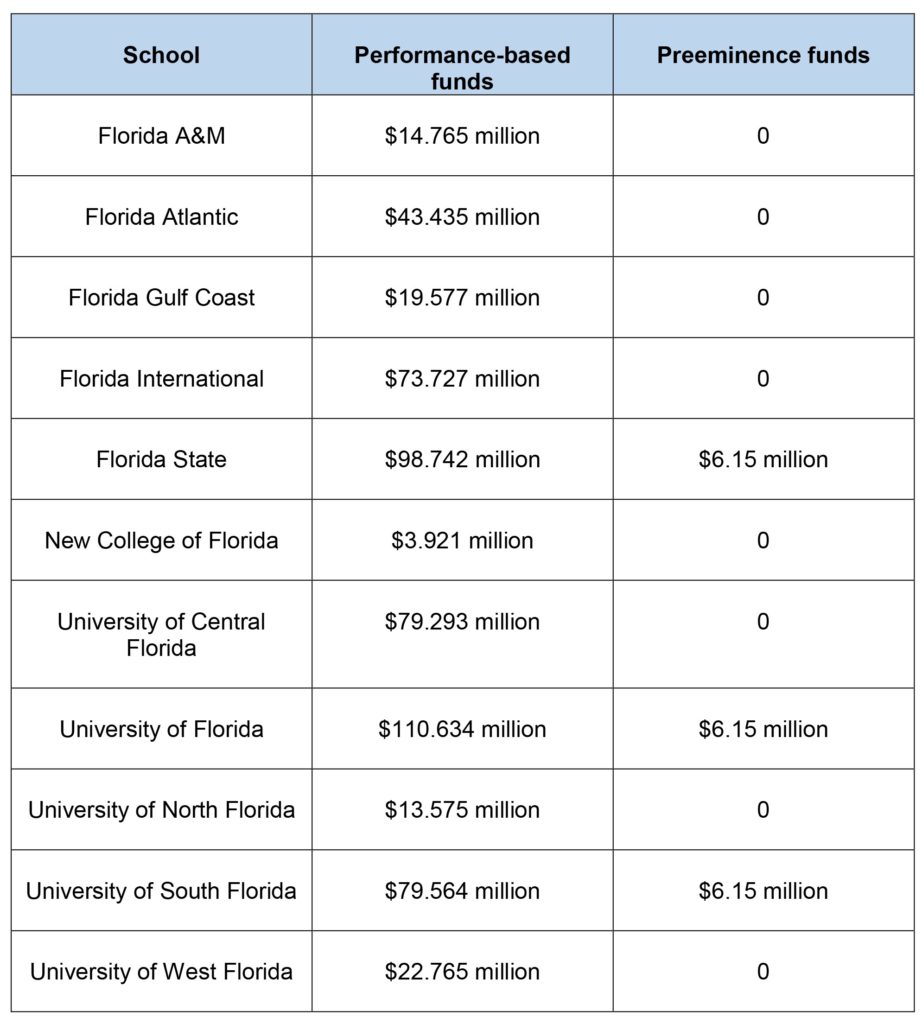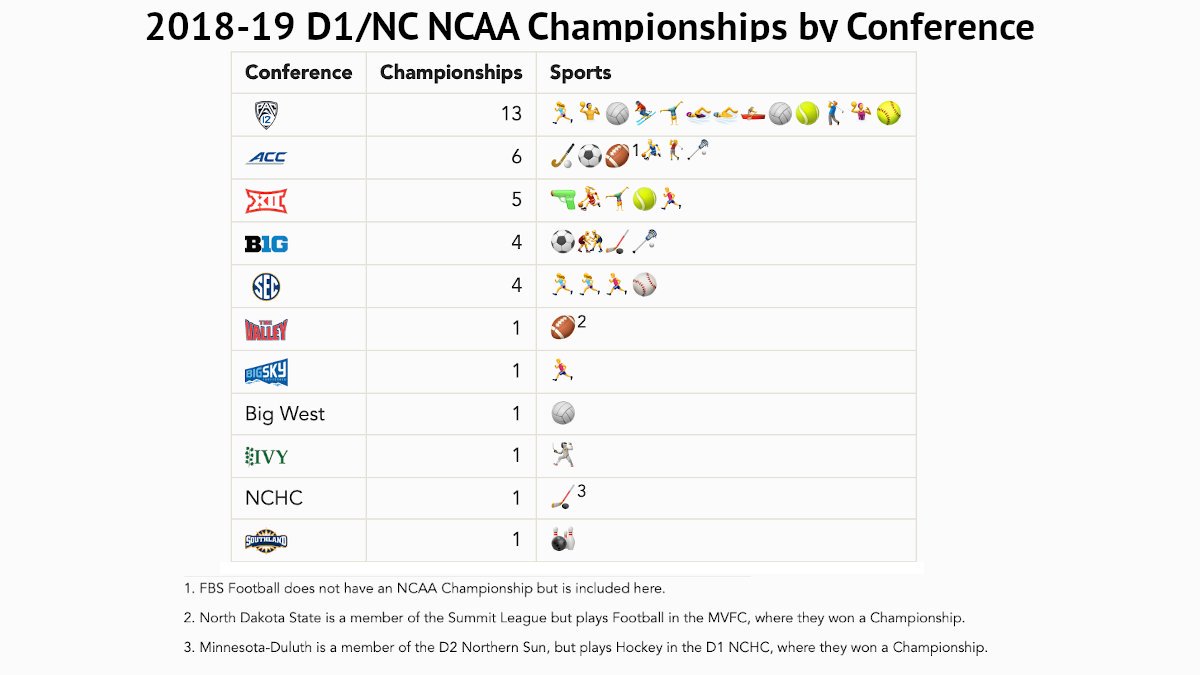https://www.tallahassee.com/story/news/2019/06/13/fsu-famu-rewarded-state-performance-achievement/1447897001/
Eleven of Florida’s 12 state universities have been allotted their share of the $560 million available for performance-based funding, with the University of Florida taking in the largest haul, or $99.9 million, including $52.6 million of its own money.
Florida State University is receiving a total of $88.9 million, including $46.8 million of its own institutional investment, along with $42 million from the state.
Florida A&M University is receiving a total of $29 million, including $13.7 million from the state and $15.3 million from its own investment.
The scores and allotments were approved Thursday by the Board of Governors as they wrapped up three days of meetings at the University of South Florida.
The State University System’s Performance Funding Model includes 10 metrics that evaluate the institutions on a range of issues. Two of the 10 metrics are choice metrics; one picked by the Board and one by the universities' boards of trustees.
The system’s newest university, Florida Polytechnic, is not yet eligible for the state funding.
The initial funding pot of $200 million coming from the state universities and the legislature in 2014-2015 has grown to $560 million this fiscal year. Of that, $265 million comes from the state and $295 million comes from university investments.
Florida State
Florida State University scored fourth among the universities this year, with 88 points. That is despite improving in eight of the 10 performance-based metrics and meeting all 12 of its preeminence metrics.
“Student success is Florida State’s top priority, and we’re thrilled that our strategic investments in this area over the years are paying dividends,” President John Thrasher said.
Florida State this week continued to receive accolades for leading the State University System with its 71.5% four-year graduation rate, a key metric for the Board of Governors.
While acknowledging each university has shown improvement, the governors want to see others raising the bar for four-year graduates.
The University of Florida has the second best four-year-graduation rate at 67.1%.
New model puts universities on notice
Besides eliminating the “bottom three” designation, the board maintained universities must earn at least 51 points to receive their institutional investment, which is the current policy.
Changes in performance-based funding allocation included:
•Universities that increase their score over the last year receive 100% of their allocation of the state investments.
•A university’s score that decreases only 1 year receives 100% of their allocation of the state investment.
•If a university’s score decreases or remains the same two consecutive years, it may receive 100% of its state allocation after presenting and completing a student success plan. Under this proposal, if the plan is approved by the board, the university may receive up to 50% of its allocation in August or September.
•If goals in the plan are met, it may receive up to the balance of its share of state investment six months after the student success plan is presented.
•Beginning with the 2021-22 appropriation, schools scoring below 70 could receive up to 50% of the state investment after presenting/completing a student success plan:
•If the plan is accepted, the university may receive up to half, or 25% of their allocation in August or September.
•If goals are met, the university may receive up to the balance of their allocation six months after the student success plan is submitted in March.
How universities scored
A breakdown on how universities scored in meeting performance metrics their share of total performance funding, which includes what each contributed to the $265-million total from their own investments, plus $295-million from the state)
University of Florida (95 points; $99,916,894)
University of West Florida (94 points; $22,066,426)
University of South Florida (92 points; $77,142,361)
Florida State University (88 points ; $88,933,412)
University of Central Florida (88 points; 77,682,252)
Florida International University (87 points ; $64,367,597)
Florida Atlantic University (86 points; $43,357,774)
Florida Gulf Coast University (81 points; $23,023,665)
University of North Florida (78 points; $26,115,521)
Florida A&M University (70 points; $29,056,843)
New College of Florida (67 points ; $8,337,255)
https://www.tallahassee.com/story/news/2019/06/07/florida-state-trustees-approve-1-9-billion-spending-plan-new-year/1383598001/
Florida State University’s Board of Trustees Friday voted to approve a $1.9 billion university spending plan for next year.
The approved operating budget represents a 6-percent increase, or $103 million more than the current budget. As is the case within the State University system, there is no tuition increase.
The university is keeping its focus on student success initiatives as part of its goal to break into the Top 25 of major public universities this year.
“This budget will allow us to continue the university’s upward trajectory as one of the best public universities in the nation, FSU President John Thrasher said.
“Student success, that’s been our mantra for the past several years, and those assets that we have put toward student success and continue for the university’s national rise, I think is very important for the university community and the state of Florida.”
The university was able to build in the budget increase although it received less funding in this year’s state budget and no new performance-based funding from the state. A 3-percent decrease in Education and General funds this year from the state resulted in a loss of $17 million, according to university documents.
State support accounts for 29.87% of the 2019-2020 budget.
A change in performance-based funding enacted by the Board of Governors this year —including removing any loss for the three lowest-performing universities — meant no new performance-based funding.
Despite this, FSU was able to free up extra money by reducing expenses by 4%, or $3 million. It also realized an increase in auxiliary funds of 4% or $9 million attributed to increased financial support from the Seminole Boosters to the Athletics Department and building improvements underway in housing.
Other money came from federal grants and contracts, increases in state grants and increased giving through private gifts.
Another factor is the increase in capital funds of 41%, or $69 million. Construction project underway include the Earth Ocean Atmospheric Sciences Building, Student Union and the STEAM building at Florida High.
The 2019-2020 construction budget totals $238.7 million.
https://crowsneststpete.com/2019/04/21/why-all-the-fuss-about-preeminence/
Performance-based funding and preeminence funding in 2018-2019
Each year, Florida’s 11 public universities receive extra funding based on their performance on 10 yardsticks, or metrics, established by the state. That is called “performance-based funding.”
Using mostly different yardsticks, universities that meet or exceed 11 of 12 metrics are also entitled to receive additional funding as “preeminent research universities.”
Only three schools got the preeminent designation this year.

Note: The University of Central Florida received $1.54 million as an “emerging preeminent university” because it met or exceeded seven of the 12 metrics.
Source: State university system
Emily Wunderlich | The Crow’s Nest


